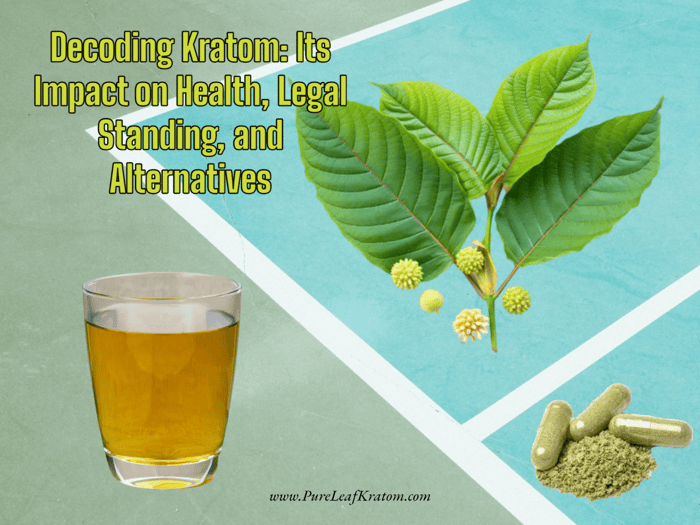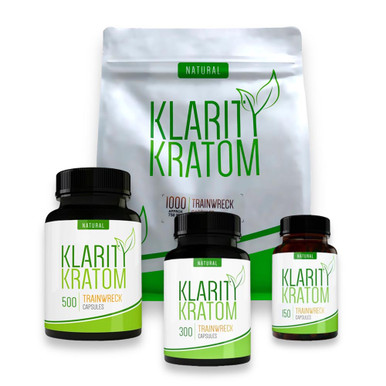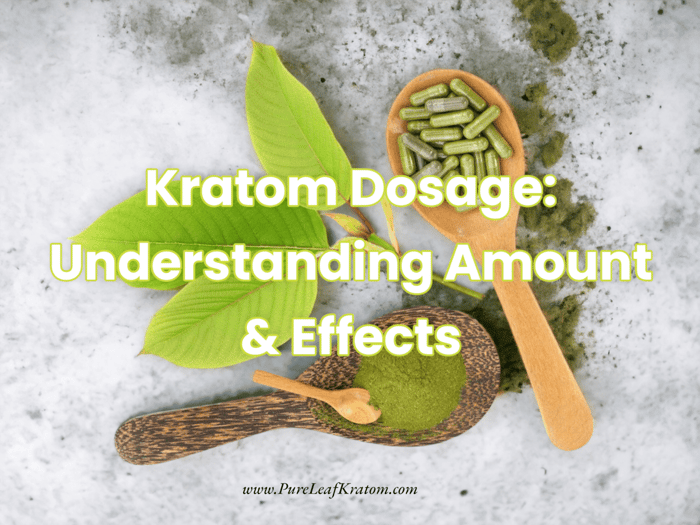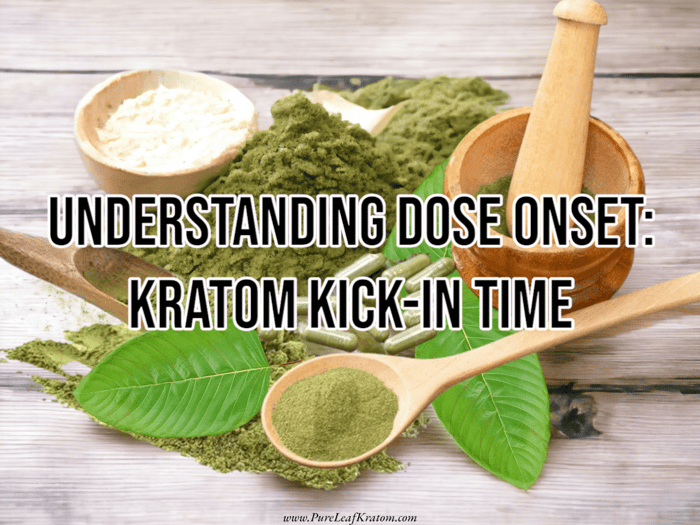
Decoding Kratom: Its Impact on Health, Legal Standing, and Alternatives
Unlocking the Mysteries of Kratom: Tracing its Roots and Inspecting the Miens of Legality
The intriguing and legal influence of kratom has sparked discussions worldwide. Whether it's sought-after euphoria, pain relief, or natural stimulation, the impact on physical health has piqued curiosity.
Brushing Up on Kratom's History
Originating from the lush tropical landscapes of Southeast Asia, kratom or Mitragyna speciosa primarily thrived in Thailand, Malaysia, and Indonesia. In these regions, it served as a traditional medicinal plant, providing relief from diverse maladies including pain, fatigue, and even helping mitigate the harsh symptoms of opium withdrawal.
As the world started to shrink with accelerated globalization, kratom crossed boundaries, journeying from the mystic east to the curious west. Over time, it transitioned from being a raw leaf chewed or brewed into tea to refined powders, capsules, and tinctures, reaching an ever-growing audience keen to explore natural alternatives for pain relief and stimulation.
Walking on the Tightrope of Legality
Despite its origins as a folk medicine, kratom's legal status remains murky waters for many. In the United States, the substance sits in a grey zone, holding neither a legal nor illegal status outright. Although banned in certain states and cities, it largely remains accessible in much of the country.
Across the globe, the legality of this natural stimulant oscillates widely. Countries like Australia, Thailand, and Malaysia impose strict prohibition, while others such as Canada and most European nations allow its use with varying degrees of regulation. This dichotomy in legal stance underscores the ongoing debates on the risks, benefits, and appropriate usage of kratom.
Documenting the Debates
The pendulum swing of kratom's legality across borders ties back largely to the ongoing discourse among scientists, lawmakers, and users alike. Research studying the pharmacological action of kratom has brought forth two key active components, mitragynine, and 7-hydroxymitragynine. These compounds interact with the body's opioid receptors, offering potential pain relief but posing concerns regarding addiction and withdrawal.
Thus, as the world continues to decode the mysteries of the kratom leaf, the mien of legality it wears continues to evolve, fueled by a quest to strike the perfect balance between ensuring public health safety and respecting individual freedom to choose alternative therapeutic paths.
Golden Grove kratom Extract Beverages Cherry Verbena Sparkling Tonic 7.5oz

$9.95
Golden Grove kratom Extract Beverages Cherry Verbena Sparkling Tonic 7.5oz Introducing the Golden Grove Kratom Extract Beverages Cherry Verbena Sparkling Tonic in a convenient 7.5oz...… read more
Kratom's Beneficial Effects: Euphoria, Pain Relief, and Stimulation
As an herbal substance, kratom is increasingly turning heads thanks to its trio of beneficial effects: euphoria, pain relief, and stimulation. Each effect stems from the two primary active compounds found within kratom leaves, mitragynine and 7-hydroxymitragynine.
Euphoria
The feeling of euphoria derived from kratom can be tied back to the brain's mu-opioid receptors. Both mitragynine and 7-hydroxymitragynine are partial agonists to these receptors. When activated, they stimulate a release of dopamine, which results in the euphoric feeling. User testimonials often report a general sense of well-being and relaxation characteristic of other euphoric substances, like certain opioids. This experience, however, lacks the severe respiratory depression associated with these opioids, making kratom a unique alternative.
Pain Relief
In terms of pain relief, mitragynine and 7-hydroxymitragynine behave similarly to traditional opioids. They engage the same receptors, mediating pain signals in the brain. Unlike typical opioids, kratom is not classified as an opiate , even though it provides comparable relief. This quality generates discussions about its potential role in handling the ongoing opioid crisis, making it a safer and non-addictive substitute.
Stimulation
In contrast to opioid analgesics that cause sedation, kratom also has an energizing effect. Its stimulatory action is often noticed at lower doses, providing increases in sociability, alertness, and focus. Several factors can moderate these effects, including dosage, personal tolerance, and the specific strain of kratom. When compared to other natural stimulants, like tea or coffee, kratom promotes a more noticeable energy rush due to its interaction with the body's adrenergic and serotonin receptors.
Risks of Kratom: Addiction, Withdrawal, and Side Effects
Although the benefits of kratom can make this herbal product appealing, it's essential to understand its potential risks, including addiction, withdrawal, and side effects. Not everyone who uses kratom will experience these, but they are a possibility, especially for long-term users or those taking higher doses.
Addiction
Kratom can be addictive due to its ability to stimulate the release of dopamine, leading to pleasurable feelings. This sets up a potential cycle of addiction, where its consumption can lead to a kratom-induced dependence syndrome. While kratom is often touted as a natural alternative to traditional opioid medications with less addictive potential, the truth is more complex. Over time, users of kratom can develop both a physical and psychological dependency, prompting them to use more of the substance to achieve the effects they desire, a pattern eerily similar to the cycle of addiction seen with opioid medications. Demographics most at risk include individuals with a history of substance abuse and those who use kratom daily or in high doses.
Withdrawal
As with other substances that can cause addiction, abruptly stopping the use of kratom can lead to withdrawal symptoms. These effects can include irritability, restlessness, decreased appetite, nausea, and physical pain among others. The withdrawal timeline can vary, but symptoms generally start within 12 to 48 hours after the last dose and can last up to a week or more. Mitigating these symptoms often requires medical supervision and potential treatments, underscoring the importance of professional health care guidance for those attempting to cease kratom use.
Side Effects
Kratom use can also be associated with a range of side effects. Short-term side effects might include dry mouth, changes in urine color or frequency, constipation, or even more severe effects like hallucinations or seizures. Long-term use can lead to more serious complications, such as liver damage, thyroid problems, or even death in rare cases. Reports of lethal cases and overdoses are limited and often involve other substances or pre-existing health conditions, but it's worth noting that risks may increase with prolonged, regular use, or high doses.
Kratom Dosage and Metabolic Process
The dosing and metabolic process of kratom are interconnected. Dosing involves determining the correct amount of kratom to consume for desired effects, while metabolism will determine how long the effects last.
Dosage Guidelines
Dosage guidelines vary depending on a person's tolerance, weight, and the desired effects. Most users start with a low dose of 1-3 grams of kratom daily, and the dosage is then increased gradually as needed, depending on the user's reaction to the drug.
Overview of recommended doses for novice and regular users
For a novice user, 2 grams is usually sufficient to bring about the desired effects. Regular users can consume up to 5 grams daily. A dose above 5 grams is considered high and should be taken with caution because of potential side effects.
Factors affecting dosage requirement
Factors like age, weight, gender, diet, and the overall health condition of the person can affect dosage requirement. Some kratom strains are stronger than others, and thus a lower dose is often sufficient.
Signs of overdose and what to do
Signs of a kratom overdose can include nausea, vomiting, sweating, hallucinations, and seizures. If you or someone you know is experiencing these signs after taking kratom, seek medical attention immediately.
Metabolic Process
Kratom metabolism begins once it reaches the stomach, and after ingestion, it undergoes a series of changes and breaks down to be absorbed into the bloodstream.
Overview of absorption, distribution, and peak plasma levels
After ingestion, kratom starts to be absorbed by the stomach and intestines and enters the bloodstream. The distribution varies depending on a person's metabolic rate. The peak plasma levels, that is, the highest concentration of the drug in the bloodstream, are typically reached within an hour or two of ingestion.
Breakdown of metabolism and elimination routes
Once it enters the liver, kratom is metabolized into various compounds, including 7-Hydroxymitragynine, which helps in achieving the stimulant and sedative effects. These byproducts are then eliminated from the body, primarily via urine and a smaller proportion through feces.
Possible drug interactions with Kratom
Kratom has a wide range of drug interactions. It can interact with drugs including opioids, antipsychotics, and other medications, altering their effects. Always consult with a healthcare professional before consuming kratom along with other medications.
Klarity Kratom Capsules Trainwreck

$14.99
Klarity Kratom Capsules Trainwreck Embark on a journey towards natural well-being with our meticulously curated Klarity Kratom Capsules Trainwreck blend. At Pure Leaf Kratom, we...… read more
Regulations, Controversies, and Public Perception of Kratom
Due to the varying effects of kratom and its potential benefits and risks, the regulation of this botanical has been subjected to scrutiny and extensive deliberations in different countries. Controversies have often arisen, resulting in varied public perceptions about the substance.
Existing Regulations
The decision-making bodies in various countries, such as the Food and Drug Administration (FDA) and the Drug Enforcement Administration (DEA) in the United States, have been notably cautious about kratom. The FDA does not support the use of kratom for medicinal purposes due to the lack of clinical trials and the potential risks of addiction, abuse, and dependence. The body has issued several warnings and advisories about the substance.
Similarly, the DEA classifies kratom as a “drug of concern”, however, it remains a legal substance in the U.S on the federal level. The future regulation of kratom could potentially affect its availability and use, depending on results from further scientific research and clinical trials into the benefits and risks associated with kratom.
In contrast to the regulatory ambiguity in the U.S., other countries have stricter rules. For example, kratom is considered illegal in Thailand, Malaysia, and Australia.
Controversies
One of the major controversies surrounding kratom involves whether it should be classified as a controlled substance. This debate arises from the lack of medical evidence on the safety and effectiveness of kratom, and the potential risks related to its euphoria-inducing abilities, addictive properties, withdrawal symptoms, and adverse side effects.
The aftermath of such controversies often results in stringent rules or an escalation in the stigma attached to kratom users. Negative public perception could potentially increase the hardships faced by regular users depending on changes in local laws and social attitudes.
Public Perception
The perception of the public towards kratom use is influenced by a variety of factors, including legal status, media portrayals, and individual experiences. The 2020 American Kratom Association survey revealed that most kratom users are middle-aged, middle-income people living in pain, contradicting the stigmatized image of typical users.
Despite this, kratom remains under the lens due to its potency and possible health implications. The backlash from society has a significant impact on the potential legalization and marketing of well-regulated, quality-controlled kratom products. The kratom industry's public relations efforts must strive to handle this negative view and reshape the public's understanding based on evidence and experiences.
Pure Leaf Kratom Powder White Borneo Extra Strength

$34.95
White Borneo Extra Strength Powder Step into a realm of heightened botanical experiences with Pure Leaf Kratom White Borneo Extra Strength Powder – a truly...… read more
Comparative Analysis: Kratom Vs. Other Stimulants and Analgesics
Comparing kratom with other stimulants and analgesics allows for a more thorough understanding of its efficacy, safety, abuse potential, and financial implications. It also contributes to projecting future trends in kratom usage.
Comparison with Coffee
There are striking similarities between kratom and coffee. Both belong to the Rubiaceae family and are consumed for their stimulant effects. However, their effects differ significantly beyond stimulation. While coffee primarily increases alertness and reduces fatigue, kratom also aids in euphoria, sedation, and pain relief.
Furthermore, kratom's cultural utilization extends beyond the usual coffee-drinking habit. Despite some user successes transitioning from coffee to kratom, the public and medical opinion often leans towards caution due to the potential for abuse and addiction associated with kratom.
Comparison with Prescription and Over-the-counter Analgesics and Stimulants
Compared to popular analgesics and stimulants, kratom boasts a comparable efficacy in pain relief and mood lifting. However, its safety profile and abuse potential are hotly debated topics. Studies have shown a risk of addiction and withdrawal symptoms in long-term or high-dosage users, similar to opioid analgesics.
The legality of kratom depends largely on geographical location and is largely unregulated, unlike prescription medicines. This raises ethical questions, especially as physical and psychological dependency on kratom can significantly impact a person’s social and economic wellbeing.
Given current trends, kratom appears likely to continue experiencing a surge in popularity, especially among those seeking alternatives to traditional analgesics and pain relievers. However, regulatory scrutiny is also likely to increase, potentially affecting kratom’s future usage and availability.




